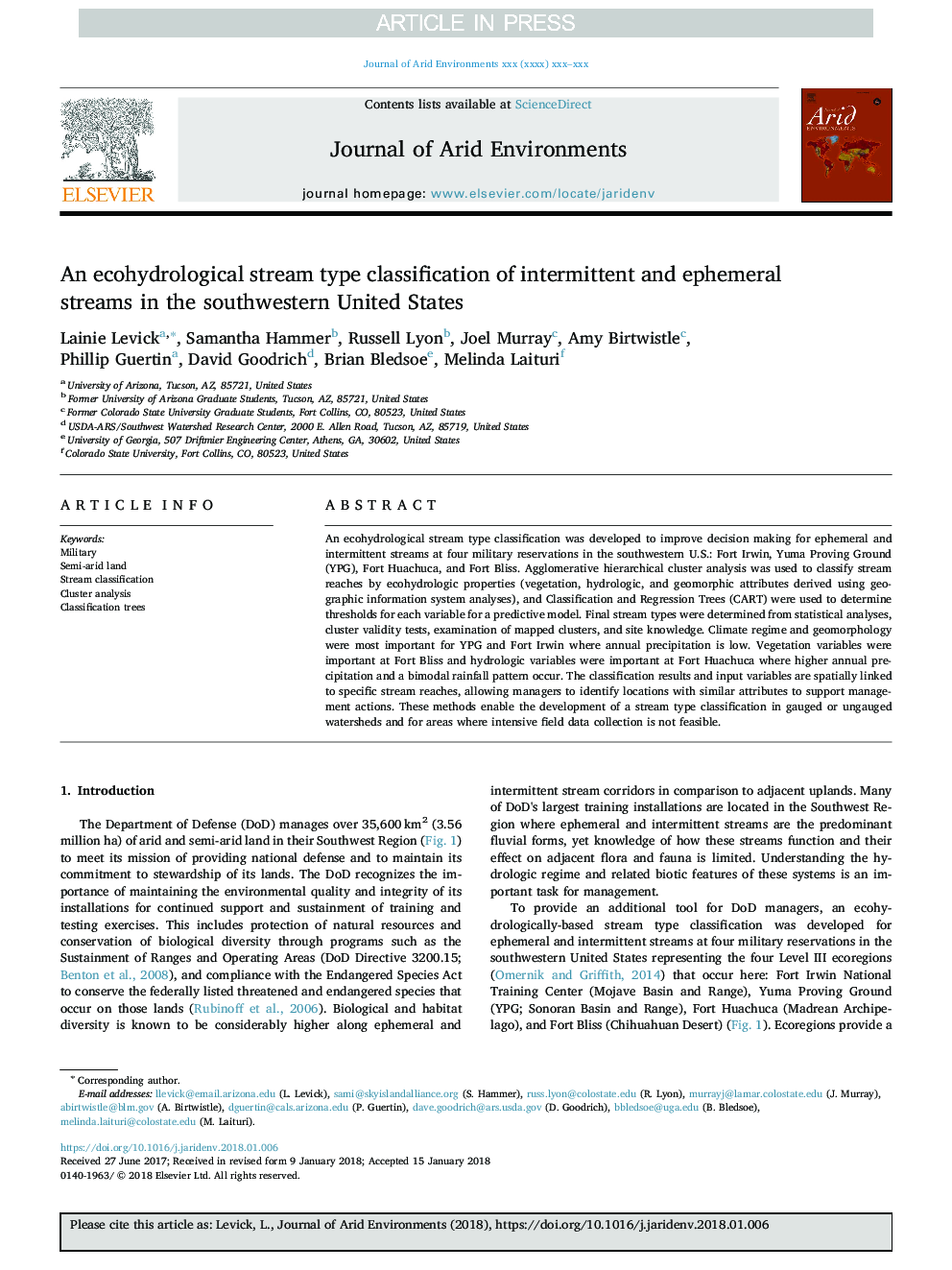| Article ID | Journal | Published Year | Pages | File Type |
|---|---|---|---|---|
| 8848472 | Journal of Arid Environments | 2018 | 20 Pages |
Abstract
An ecohydrological stream type classification was developed to improve decision making for ephemeral and intermittent streams at four military reservations in the southwestern U.S.: Fort Irwin, Yuma Proving Ground (YPG), Fort Huachuca, and Fort Bliss. Agglomerative hierarchical cluster analysis was used to classify stream reaches by ecohydrologic properties (vegetation, hydrologic, and geomorphic attributes derived using geographic information system analyses), and Classification and Regression Trees (CART) were used to determine thresholds for each variable for a predictive model. Final stream types were determined from statistical analyses, cluster validity tests, examination of mapped clusters, and site knowledge. Climate regime and geomorphology were most important for YPG and Fort Irwin where annual precipitation is low. Vegetation variables were important at Fort Bliss and hydrologic variables were important at Fort Huachuca where higher annual precipitation and a bimodal rainfall pattern occur. The classification results and input variables are spatially linked to specific stream reaches, allowing managers to identify locations with similar attributes to support management actions. These methods enable the development of a stream type classification in gauged or ungauged watersheds and for areas where intensive field data collection is not feasible.
Related Topics
Physical Sciences and Engineering
Earth and Planetary Sciences
Earth-Surface Processes
Authors
Lainie Levick, Samantha Hammer, Russell Lyon, Joel Murray, Amy Birtwistle, Phillip Guertin, David Goodrich, Brian Bledsoe, Melinda Laituri,
